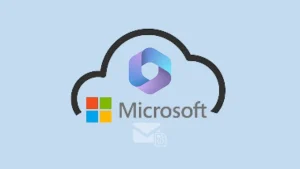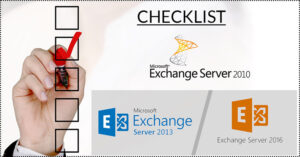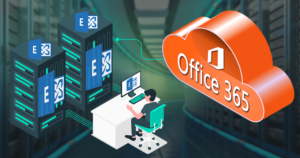Migrating to the Exchange Online requires decommissioning the old Exchange Server. It is necessary to decommission the Exchange Server if you want to avoid unnecessary troubles after moving your data to a new version or Exchange Online. Before going to learn how to do it, let us share what decommission is. It is a way to remove an old Exchange Server from your device and install a new one. There are various steps involved in the process of Exchange Server decommission. If you want to know the procedure for removing an Exchange Server, kindly read this blog and understand.
When do users need to decommission Exchange Server?
Users may have various reasons for wanting to remove their old Exchange Server, and the following section will help you understand them.
- Your existing Exchange Server is facing a hardware failure issue.
- In case you have migrated from On-premises Exchange to Exchange Online. Managing two platforms is challenging and can also cause unexpected issues. Therefore, users need to decommission the On-premises Exchange Server.
Mostly, users prefer to perform this task after migrating from their Exchange on-premises to an updated version or Exchange Online. Whether there is any reason for the decommission, the question is how users can complete this process smoothly.
Procedure for removing Exchange Server after migration
Here, we will share the manual solution to decommission Exchange Server.
Note: Keep a backup copy of your Exchange Server data while performing the Exchange Server decommission process.
Condition 1: Your organization runs in a hybrid configuration with all data in MS Exchange Online. You do not need directory synchronization and don’t want to manage users through On-premises.
In this case, we will disable directory synchronization and remove the Exchange Server from their environment so that they can manage all their users through Office 365. Let’s understand the steps to decommission Exchange Server from your environment.
Step 1: First, you need to check the Public folder settings using the command
Get-OrganizationConfig | Format-List PublicFoldersEnabled.Step 2: Now, check if it is set on Remote. If it is, you need to migrate public folders to Microsoft 365 mailboxes.
Step 3: Then, you have to update DNS Records:
- Point the MX and Autodiscover DNS records to Exchange Online.
- After that, update the internal and external DNS to maintain connectivity smoothly without any hassle.
Step4: Run the command to remove Service Connection Point (SCP) Values for Exchange Server 2010 or 2013:
Get-ClientAccessServer | Set-ClientAccessServer -AutoDiscoverServiceInternalUri $NullFor Exchange 2016 and above versions:
Get-ClientAccessService | Set-ClientAccessService -AutoDiscoverServiceInternalUri $NullStep 5: Then, you need to delete the Hybrid configuration wizard connectors; follow the steps:
- Go to the Microsoft 365 admin center and log in as administrator.
- After that, navigate to the Exchange, Mail Flow, and click the Connectors.
- You need to turn off the inbound and outbound connectors to proceed further.
Step 6: Here, we will turn off the organization relationship:
- To do this, log in to the Office 365 admin center.
- Then, move to the Exchange, Organization, and Organization sharing options.
- After that, remove the O365 to On-Premises.
Step 7: This step is to turn off the Oauth configuration using the PowerShell commands.
For Exchange On-premises:
Get-IntraorganizationConnector -Identity ExchangeHybridOnPremisesToOnline | Set-IntraOrganizationConnector -Enabled $FalseFor Exchange Online:
Get-IntraorganizationConnector -Identity ExchangeHybridOnlineToOnPremises | Set-IntraOrganizationConnector -Enabled $FalseStep 8: Now, turn off the directory synchronization for the Exchange Online.
Step 9: Finally, uninstall the On-premises Exchange Server.
Condition 2: If your organization has moved all the mailboxes to Exchange online but wants to keep Active Directory Federation Services (ADFS) for user authentication, you need to follow the instructions below.
For this, all the steps are the same as those discussed in the above section; only you have to replace Steps 6 and 9 and follow further steps instead of them.
Step 6: Here, you need to retain the necessary Exchange Servers. Keep one or two Exchange Servers to manage users, which you can run on the virtual system.
Step 9: Enable the Exchange Hybrid Deployment feature in the Microsoft Entra Connect or Cloud sync.
That is how you can decommission Exchange Server after the Exchange Online migration. To avoid challenges, make sure to keep a backup of your Exchange database.
Conclusion:
In the above blog, we shared how users can decommission Exchange Server after migrating to the Exchange Online. These steps can be tricky and need technical knowledge, so keeping a backup of your data is a must. Users can make mistakes while performing these complicated steps, which can harm their data. Therefore, we recommend that users use the Shoviv Exchange Recovery Manager Tool and keep data backed up on a local drive. This software allows users to back up Exchange data in various file formats, including PST, HTML, MSG, etc.
Also, it is easy for users to access as it comes with a simple user interface. Moreover, users can also restore their backup files to their Exchange account without any hassle. To check its capability and efficiency, users can try its free demo version, which allows processing the first 50 items per folder.
- How to Backup and Restore Emails in Webmail? - March 25, 2025
- How to Migrate Outlook to New Computer? - February 15, 2025
- Fix If Outlook Cannot Display the Specific Folder Location - February 1, 2025


